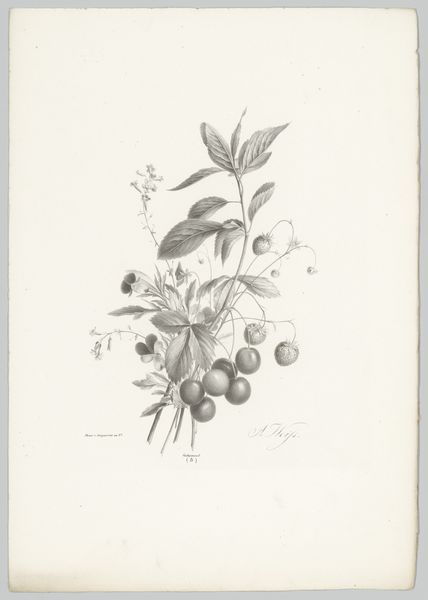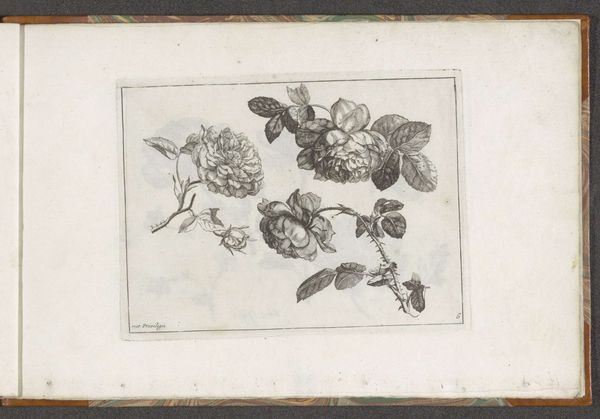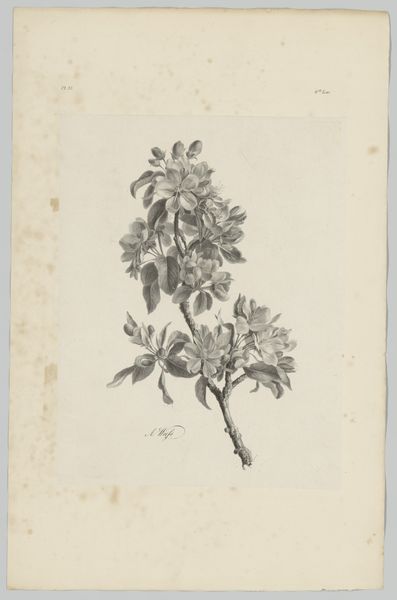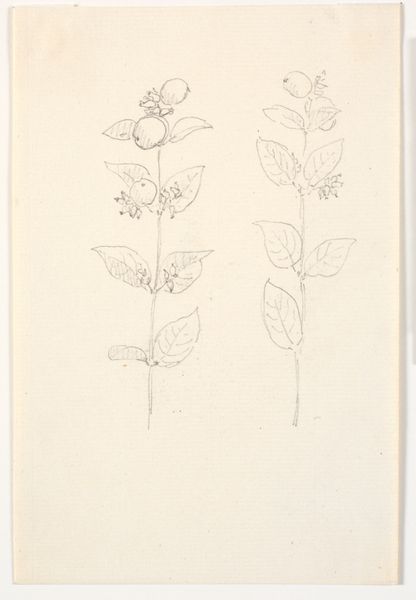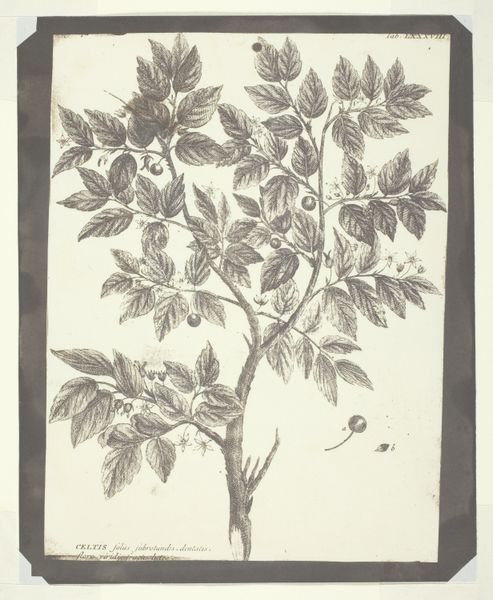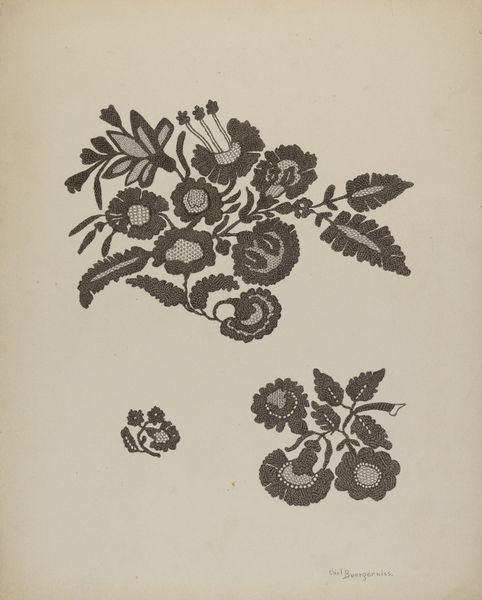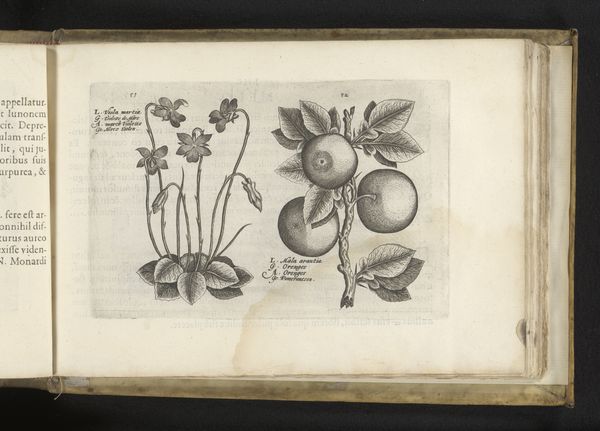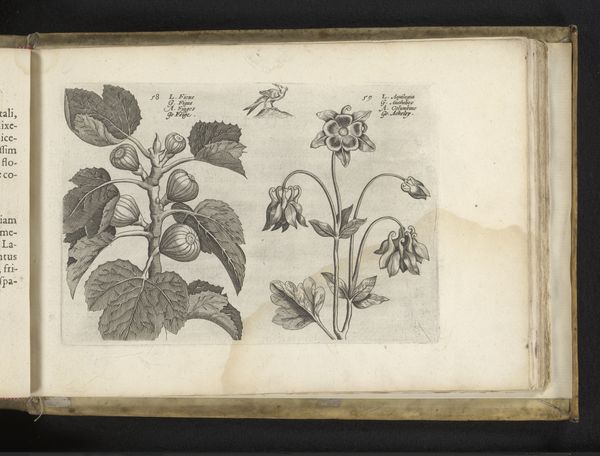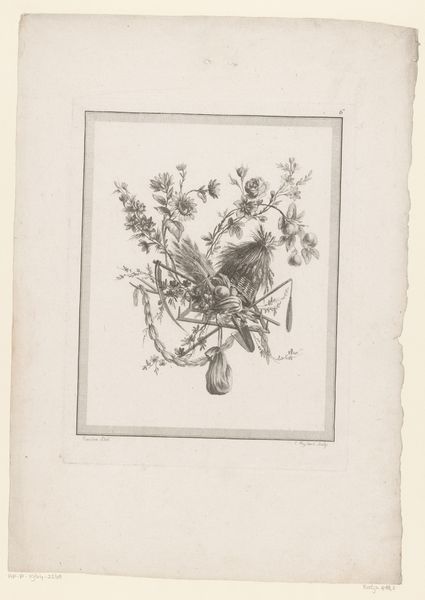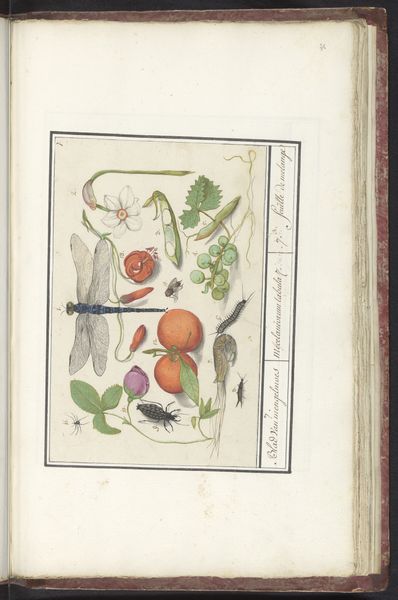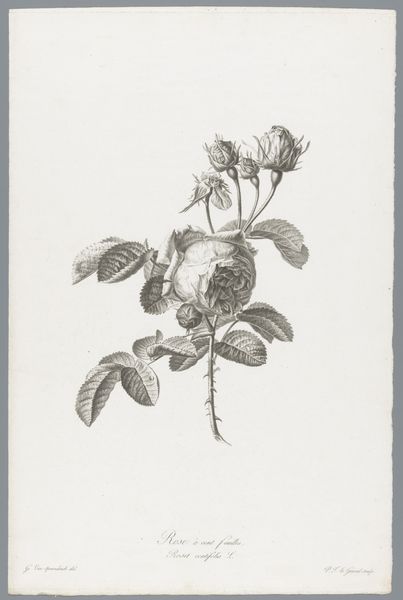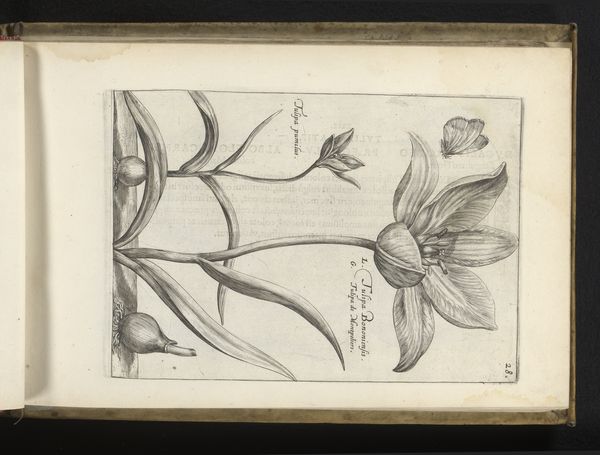
drawing, paper, ink
#
drawing
#
pen sketch
#
paper
#
ink
#
ink drawing experimentation
#
watercolour illustration
Dimensions: height 175 mm, width 200 mm
Copyright: Rijks Museum: Open Domain
This engraving of an indigo and cotton plant was made by Jan Caspar Philips in the 18th century. It's a detailed, descriptive image, the kind that circulated widely during the Enlightenment. The image reflects the period's intense interest in natural science, but let's not forget the context. Indigo and cotton were hugely important commodities in the 1700s, at the heart of global trade networks. Their cultivation relied on enslaved labor, particularly in the Americas. Philips himself never saw these plants, but reproduced them based on specimens and descriptions brought back to Europe. The print is made by cutting lines into a copper plate, inking it, and running it through a press. This was a thoroughly industrialized process by the 1700s. The print medium allowed for mass production, which in turn facilitated the circulation of knowledge and, of course, the expansion of commerce. So this seemingly straightforward image is really a window onto the intertwined histories of science, labor, and capitalism.
Comments
No comments
Be the first to comment and join the conversation on the ultimate creative platform.
